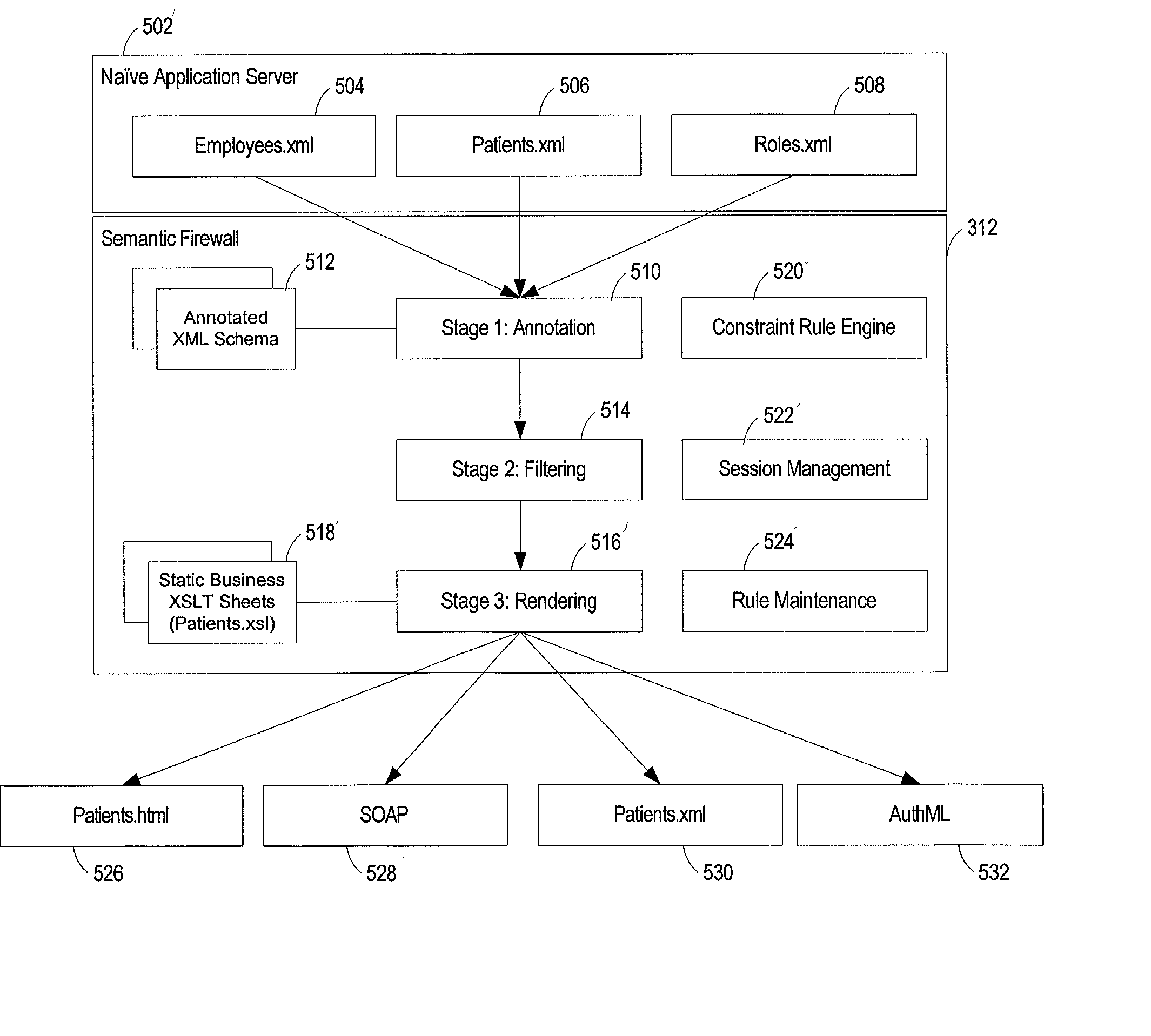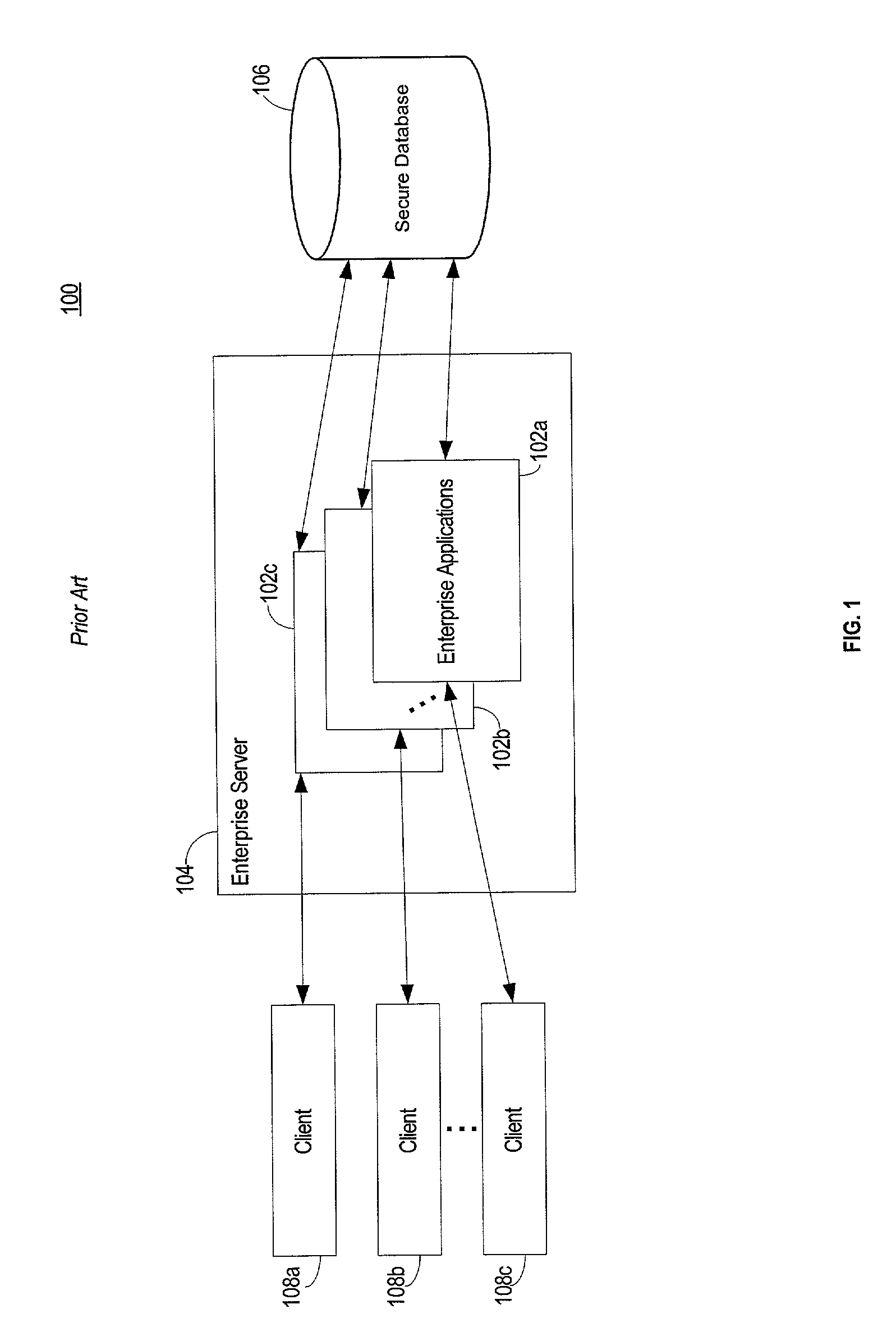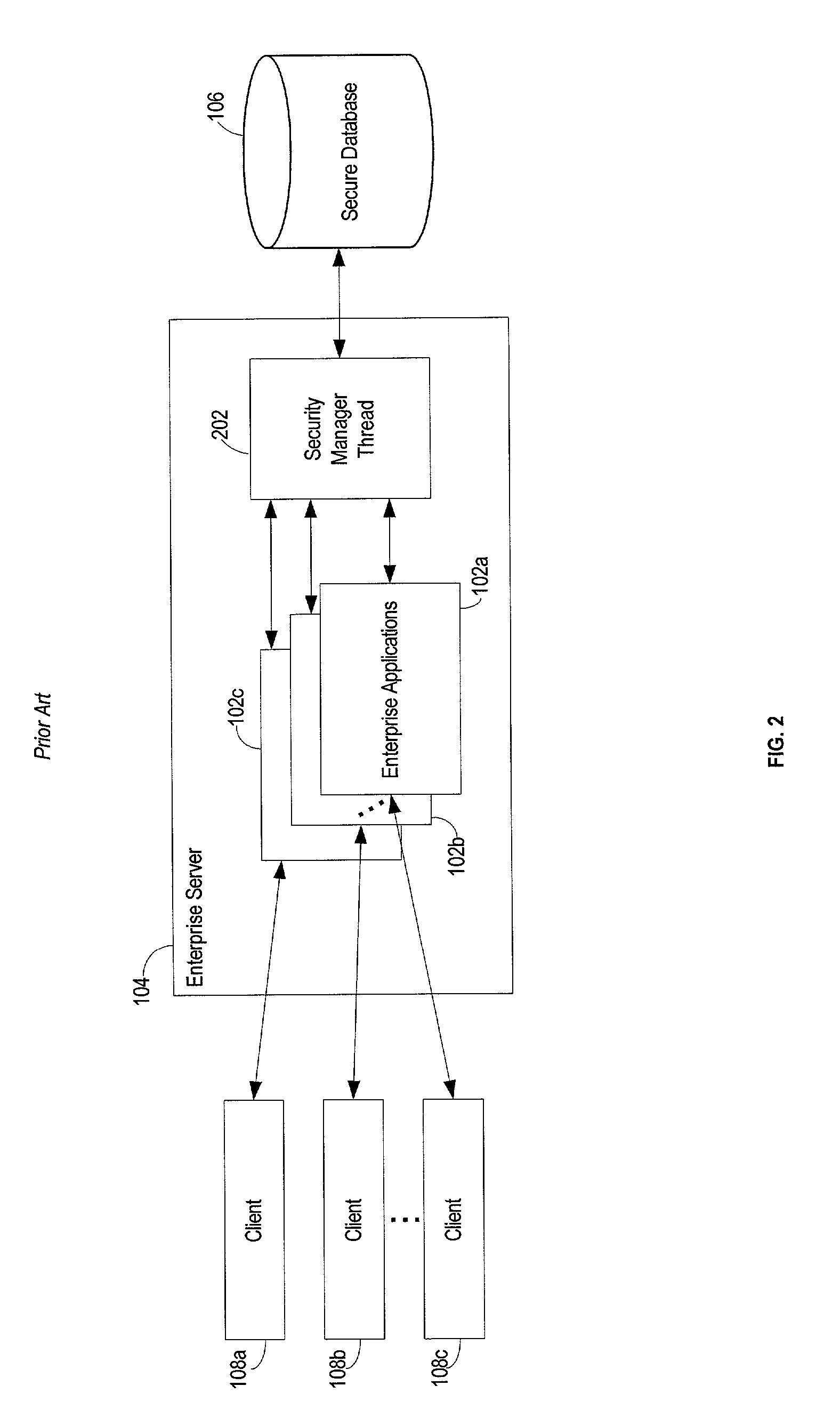Layering enterprise application services using semantic firewalls
a firewall and enterprise application technology, applied in the field of fireballs, can solve the problems of inability to consider the information assurance aspects of business processes in these models, designers developing complex intertwined solutions that are not scalable, and difficult configuration
- Summary
- Abstract
- Description
- Claims
- Application Information
AI Technical Summary
Problems solved by technology
Method used
Image
Examples
Embodiment Construction
[0051] A preferred embodiment of the invention is discussed in detail below. While specific exemplary embodiments are discussed, it should be understood that this is done for illustration purposes only. A person skilled in the relevant art will recognize that other components and configurations can be used without parting from the spirit and scope of the invention.
[0052] FIG. 3 depicts an exemplary embodiment of a system for network transaction and security management according to the present invention. A semantic firewall 312, which can be, for example, an XML-based filter, lies outside the core enterprise applications 302a, 302b, and 302c (generally 302). The semantic firewall 312 acts as a layer between requests for data from clients 308a, 308b, and 308c (generally 308) and the enterprise server 304. The clients 308 no longer interact directly with the enterprise applications 302 as in the conventional approaches illustrated in FIGS. 1 and 2. Instead, the semantic firewall 312 re...
PUM
 Login to View More
Login to View More Abstract
Description
Claims
Application Information
 Login to View More
Login to View More - R&D
- Intellectual Property
- Life Sciences
- Materials
- Tech Scout
- Unparalleled Data Quality
- Higher Quality Content
- 60% Fewer Hallucinations
Browse by: Latest US Patents, China's latest patents, Technical Efficacy Thesaurus, Application Domain, Technology Topic, Popular Technical Reports.
© 2025 PatSnap. All rights reserved.Legal|Privacy policy|Modern Slavery Act Transparency Statement|Sitemap|About US| Contact US: help@patsnap.com



